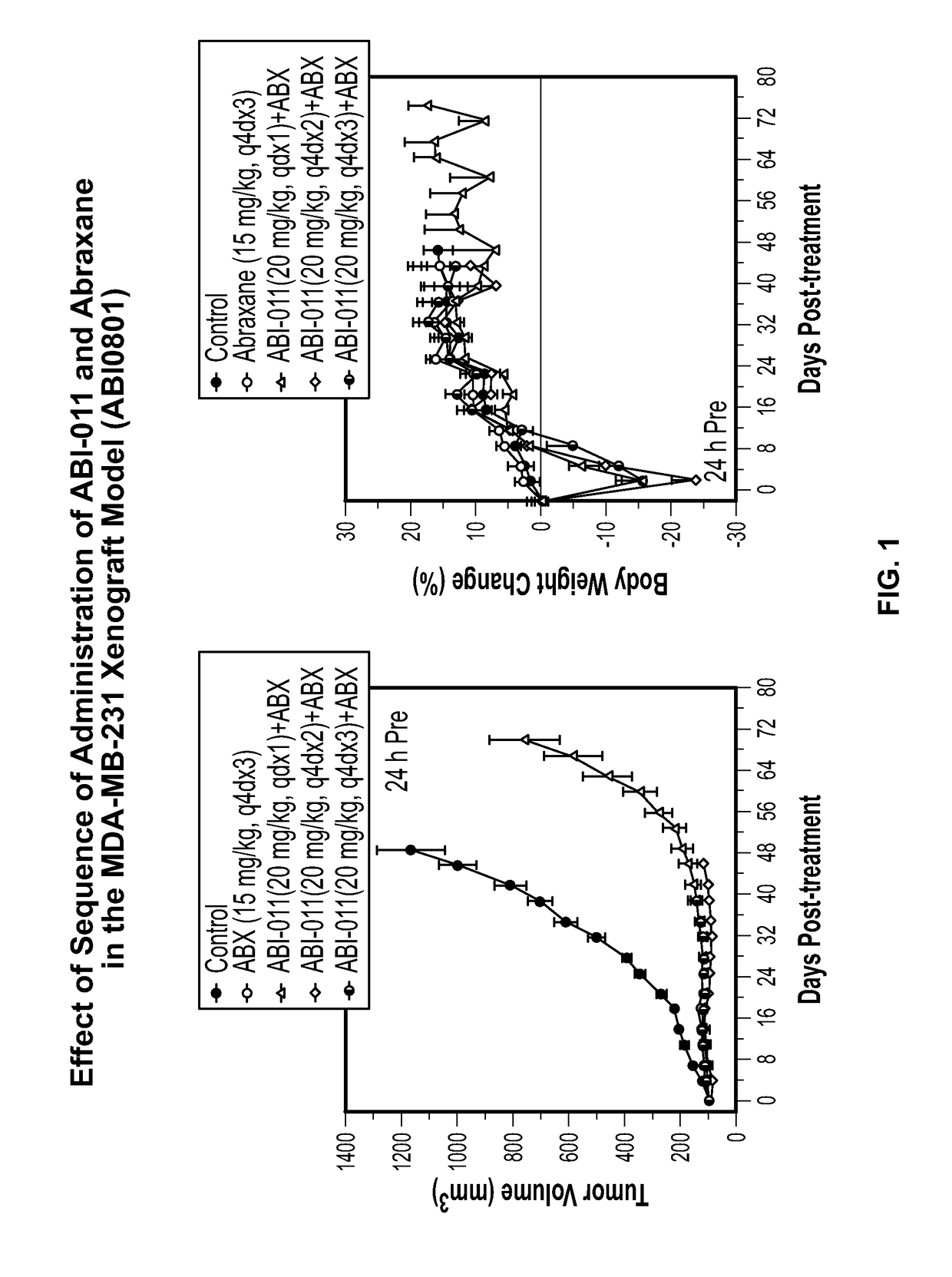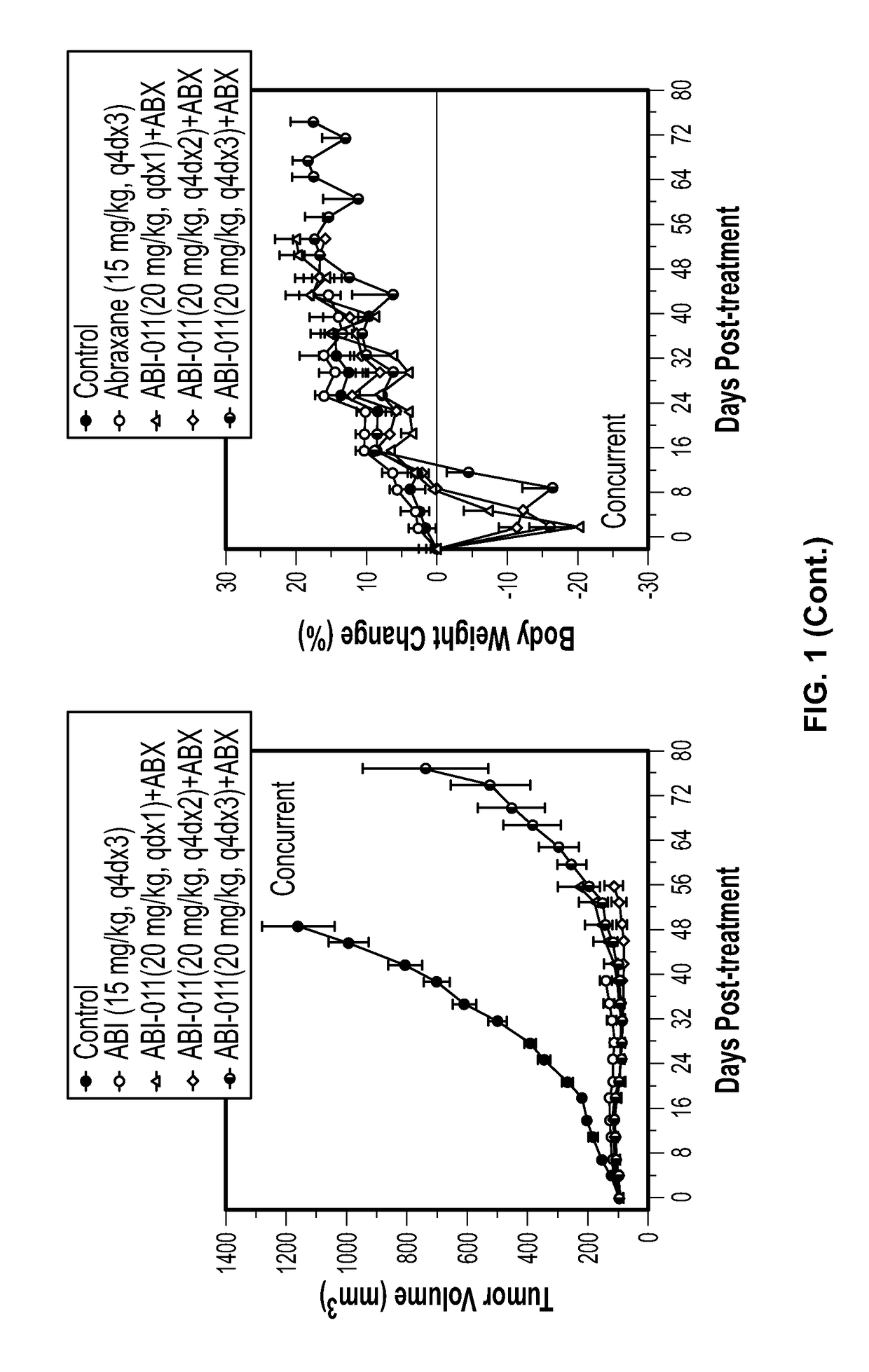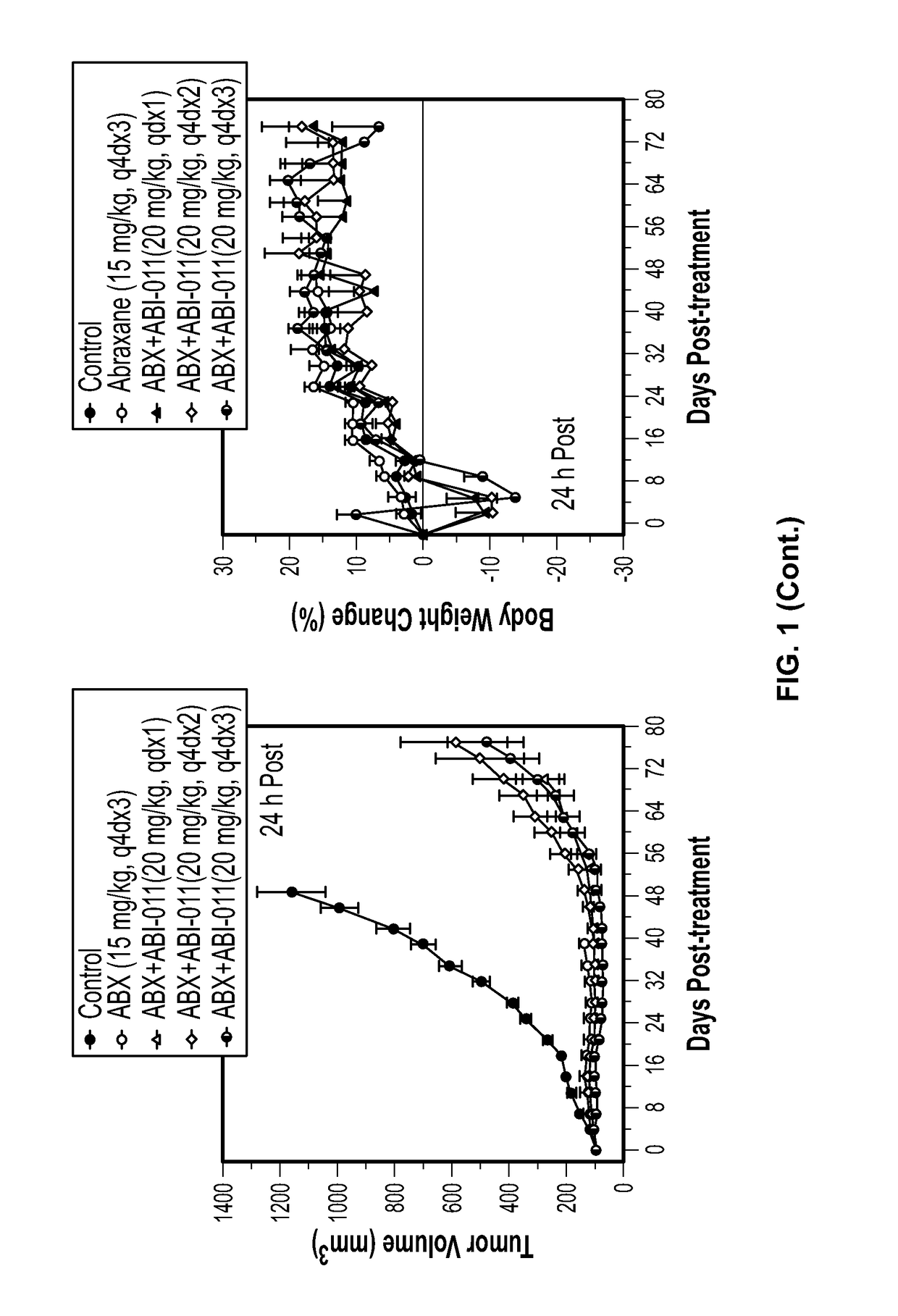Combination therapy with thiocolchicine derivatives
a technology of thiocolchicine and derivatives, which is applied in the field of proliferative diseases, can solve the problems of inaccessibility to surgeons, inability to treat tumors located in other areas, and inability to respond to drug and/or radiation therapy for a significant number of tumors,
- Summary
- Abstract
- Description
- Claims
- Application Information
AI Technical Summary
Benefits of technology
Problems solved by technology
Method used
Image
Examples
example 1
Dependent Enhancement of Antitumor Activity of the Vascular Disrupting Agent ABI-011 by Nab-Paclitaxel and Bevacizumab
[0195]Background: The tumor vasculature is an established target for anticancer therapies. Vascular disrupting agents (VDAs) compromise established tumor vasculature and have the potential to destroy tumor masses as well as preventing progression. ABI-011, a nanoparticle composition comprising a thiocolchicine dimer (IND5404) and human serum albumin, is a potent VDA with antitubulin and topoisomerase 1 inhibitor properties. ABI-011 displayed significant anti-tumor activity in mouse xenograft models of human breast, colon, prostate, and ovarian carcinoma. In this study, the importance of dose, schedule, and sequence for the combination of ABI-011 and nab-paclitaxel (Abraxane®) or bevacizumab (Avastin) was evaluated in mice bearing xenografted human tumors.
[0196]Methods: Subcutaneous human breast (MDA-MB-231), colon (HT29) and prostate (PC3) tumors were grown in athymi...
example 2
inetic and Cardiovascular Safety Profile of ABI-011 in Cynomolgus Monkeys
[0211]Background: ABI-011 is a thiocolchicine dimer with potent vascular disrupting and antitumor activities. Vascular disrupting agents (VDAs) have been shown to have side effects related to their cytotoxicity and tubulin-binding abilities at higher doses than are required for the tumor vascular shutdown. Consequently, adverse cardiac effects have been previously reported for tubulin-binding VDAs such as ZD6126. In this study, ABI-011 was examined for its pharmacokinetic (PK) properties and cardiopulmonary safety profile in cynomolgus monkeys.
[0212]Methods: In the multiple dose blood pharmacokinetic study, ABI-011 was intravenously administered over 30 min at 1.67, 2.5 and 3.33 mg / kg weekly for 3 weeks in male and female cynomolgus monkeys (n=3-5 animals / sex / group). Blood samples were collected pre-dose, during, and after infusion on Study Days 1 and 15. Whole blood samples were analyzed for ABI-011 concentrat...
example 3
Disrupting Activity of ABI-011
[0215]Background: The tumor vasculature is an established target for anticancer therapies. ABI-011 is a thiocolchicine dimer with antitubulin and topisomerase 1 inhibitor properties. In this study, ABI-011 was examined for antiangiogenic as well as vascular disrupting activities (VDA).
[0216]Methods: The antiangiogenic and VDA effects of ABI-011 were examined in vitro using tubule formation assay with human umbilical vein endothelial cells (HUVEC) and in vivo using the standard chick embryonic chorioallantoic membrane (CAM) assay with 3-day old embryos (n=18). The shell-less quail embryonic CAM assay was used to determine the time course of VDAs (ABI-011 vs. combretastatin A4 Phosphate [CA4P]). Quail embryos (n=36) were exposed to ABI-011 (1 to 16 μg / ml) on day 7 and digital CAM images were acquired over a 60 min period for scoring VDA. Subcutaneous human colon (HT29) tumors were grown in athymic nude mice and treated intravenously (IV) with ABI-011 (20-...
PUM
| Property | Measurement | Unit |
|---|---|---|
| diameter | aaaaa | aaaaa |
| average diameter | aaaaa | aaaaa |
| diameter | aaaaa | aaaaa |
Abstract
Description
Claims
Application Information
 Login to View More
Login to View More - R&D
- Intellectual Property
- Life Sciences
- Materials
- Tech Scout
- Unparalleled Data Quality
- Higher Quality Content
- 60% Fewer Hallucinations
Browse by: Latest US Patents, China's latest patents, Technical Efficacy Thesaurus, Application Domain, Technology Topic, Popular Technical Reports.
© 2025 PatSnap. All rights reserved.Legal|Privacy policy|Modern Slavery Act Transparency Statement|Sitemap|About US| Contact US: help@patsnap.com



